
-
If you’re looking for a simple, efficient and easy-to-use option, it’s hard to go wrong with a canister camping stove. Available in a range of sizes, from minimal isobutene backpacking stoves (like the one pictured above) to large, dual-burner propane stoves, these models all run on replaceable gas-filled canisters. When it’s time to replenish the fuel, simply unscrew the empty canister and replace it.
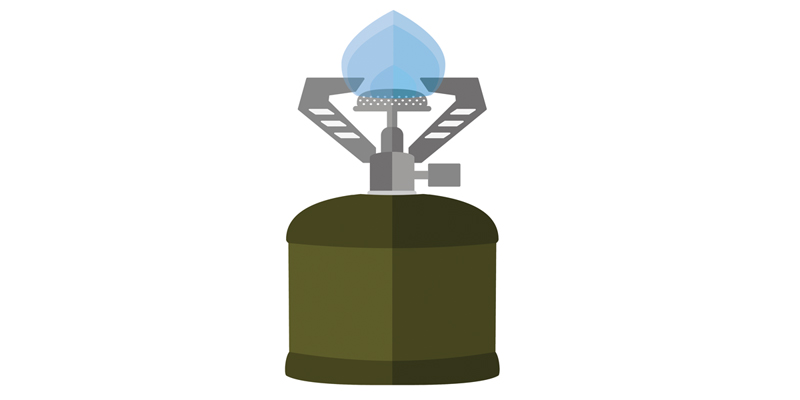
Canister Stove Pros:
- Fuel canisters are easy to use and self-contained (won’t leak unless damaged).
- Adjustable temperature control.
- Wide variety of designs for different applications.
Canister Stove Cons:
- May not work reliably in sub-freezing temperatures.
- BTU output may decrease as fuel level becomes low, even if the canister is not completely empty (depending on the design).
- Gas canisters are not as widely available as liquid fuels, and not all canisters are universal.
- Canisters are more costly compared to liquid and solid fuels.
-
The reliable white gas stove has been a trusted companion to many campers for decades. Not only will this type of stove crank out an impressive amount of BTUs, the manual pumping feature tends to make this type of stove more reliable in sub-freezing conditions. Liquid white gas (sometimes called camp fuel) is also widely available and more affordable compared to most isobutane canisters.
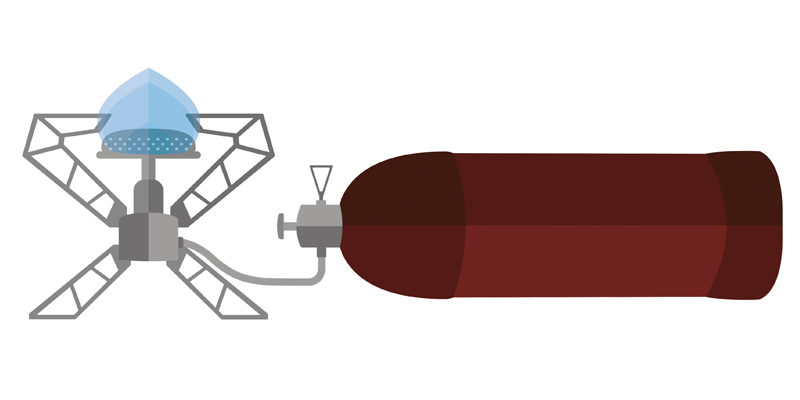
White Gas Stove Pros:
- Fuel is easy to find and generally more affordable than gas canisters.
- Adjustable temperature control.
- More BTU output than other types of stoves.
White Gas Stove Cons:
- Requires manual pumping to create pressure.
- Potential for fuel leaks.
-
Although kerosene stoves are largely considered to be obsolete (only a few companies still produce them), some old-school outdoor cooks still enjoy using kerosene. Just be aware that older kerosene stoves have a reputation for being temperamental and less efficient than modern white gas stoves.
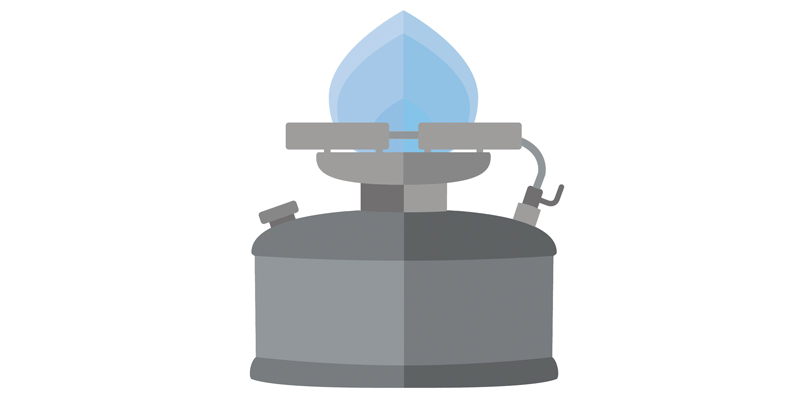
Kerosene Stove Pros:
- Fuel is easy to find and generally more affordable than canisters.
- Adjustable temperature control.
Kerosene Stove Cons:
- Less efficient than white gas.
- Requires manual pumping to create pressure.
- Potential for fuel leaks.
-
Designed to burn several different types of fuel, multi-fuel stoves offer maximum versatility, which can be essential for people who travel all over the world, especially in rural locations where white gas and isobutene canisters may be hard to find. Many models are able to burn white gas, kerosene, unleaded gasoline or diesel. Some can even burn aviation fuel. However, it’s important to be aware that certain automotive fuel additives can cause gunk to build up in your stove over time. For this reason, it’s best to run your multi-fuel stove on white gas, unless you get in a pinch.
Multi-Fuel Stove Pros:
- The flexibility to use multiple fuels is an excellent benefit.
- Widest fuel availability of any stove.
- Adjustable temperature control.
Multi-Fuel Stove Cons:
- Requires manual pumping.
- Potential for fuel leaks.
- Multi-fuel stoves tend be among the most expensive options.
-
Pocket stoves from brands like Bleuet typically combine a simple metal stand that holds a small, flammable fuel cube. The stand may also double as a pot holder (like the example above). Lit fuel cubes produce a moderately sized flame that is sufficient to heat a small pot of water. Because they’re so affordable and compact, solid-fuel stoves can also be added to a survival kit or used as a backup stove.
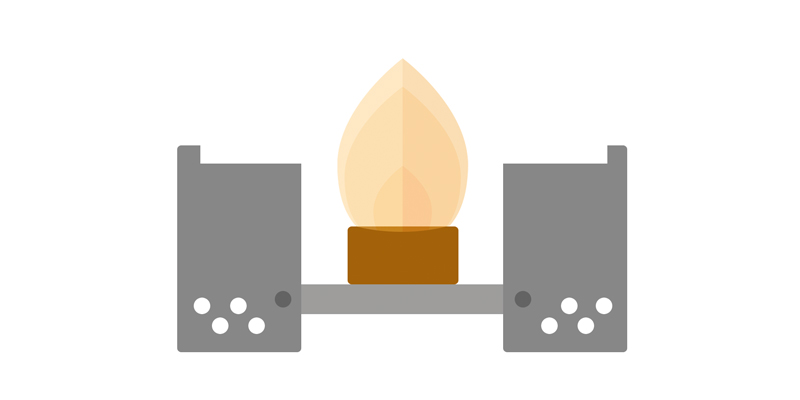
Solid Fuel Stove Pros:
- Solid fuel stoves are very lightweight, compact and inexpensive.
- Solid fuel won’t leak or spill.
- Solid fuel is less combustible than gas and liquid fuels.
Solid Fuel Stove Cons:
- Cooking power is much weaker compared to liquid and gas fuels.
- No temperature adjustment.
- Burning solid fuel may leave a residue on pots.
- Some people find the odor of burning solid fuel to be unpleasant.
-
Did you know you can build your own alcohol stove at home using a couple of soda cans? Simple “pop can stoves” have been around for years, and have become very popular with backpackers and DIY enthusiasts. Today, there are dozens of designs available on the web. For detailed information, crafting instructions and tips, check out Zen and the Art of the Alcohol Stove. Of course, you can also buy a prefabricated alcohol stove from companies like Trangia.
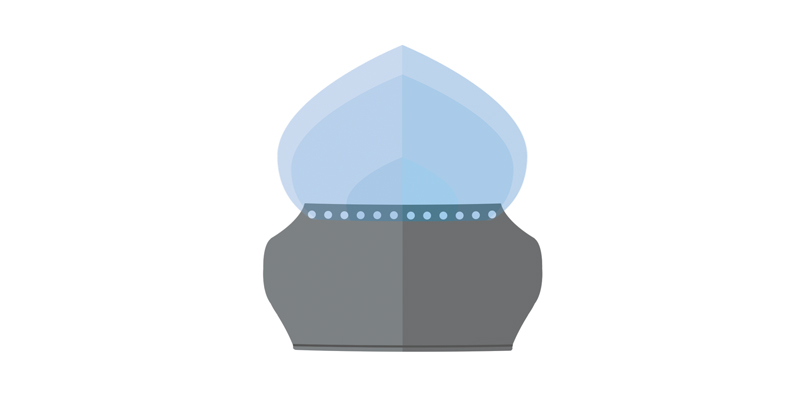
Alcohol Stove Pros:
- Most alcohol stoves are extremely light and compact.
- DIY alcohol stoves are very affordable.
- Fuel is inexpensive and virtually odorless.
Alcohol Stove Cons:
- Homemade aluminum can stoves are more prone to being crushed or damaged, and can be less reliable in sub-freezing conditions.
- BTU output is less than white gas and propane/butane stoves.
- Flame is often invisible during the daytime.
- Many alcohol camping stoves don’t allow for temperature adjustment.
- If tipped over, fuel can quickly leak out, causing a potential fire hazard.
-
For a more efficient, contained alternative to a campfire, some outdoor cooking enthusiasts use a compact wood-burning stove. Although a few companies do sell this type of stove, many campers prefer to make their own. Variations range from a simple coffee can stove to more advanced designs.

Wood Camping Stove Pros:
- Wood fuel is free and plentiful in many outdoor locations.
- Wood fuel is not combustible like liquid and gas fuels.
- Wood fuel won’t leak or spill.
- When used properly, wood stoves are generally safer and more contained than a campfire.
Wood Camping Stove Cons:
- Wood fuel takes longer to ignite and generate optimal heat output compared to liquid and gas fuels.
- Most wood camp stove designs don’t offer temperature adjustment.
- Wood-burning camping stoves tend to be heavier and bulkier compared to other camping stoves.
- Stove and pots will become coated with soot over time, which can rub off on clothing and gear.
-

Any time you’ll be cooking with an open flame outdoors, you should prepare a safe cooking area first. Start by making sure your cooking surface is level and clear of flammable materials, such as dry leaves and vegetation. Most people setup their camp stove on the ground or on a flat rock. Never cook inside your tent with an open flame.
If you’re cooking outdoors in bear country, always keep your cooking area and food a safe distance from your sleeping area. Store food in a bear-proof container or hang it high up in a tree using a bear bag. This will also protect your food from other wild animals, like raccoons and small rodents.
Finally, if you’re cooking with a wood-burning camp stove and there is a fire ban in effect, be sure to ask a ranger or local fire department if portable wood stoves are exempt from the ban. It’s always better to be safe than sorry.